Ever wondered about the true nature of Cottonwood trees? Dive in as we explore if Cottonwood stands tall among the hardwoods!
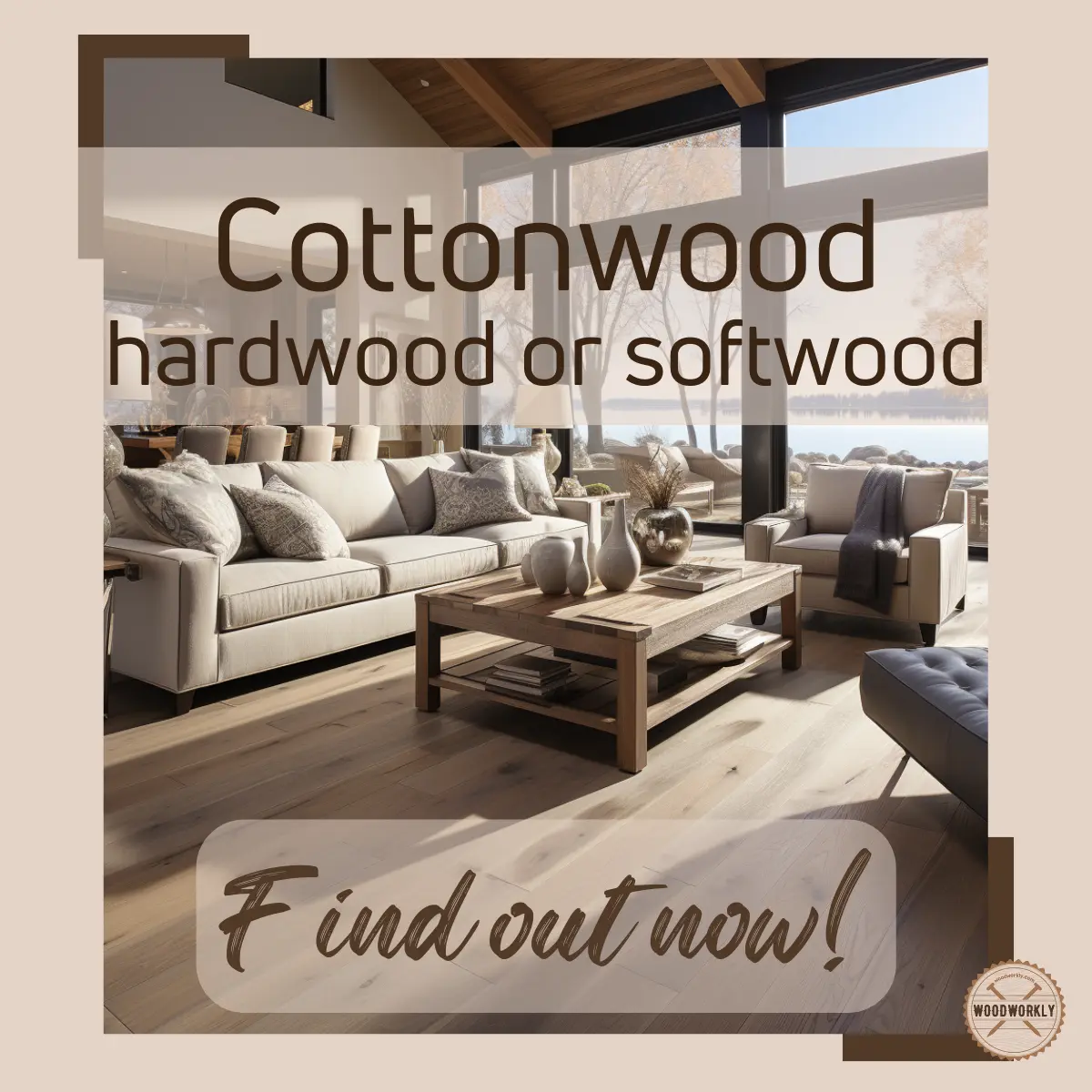
Cottonwood is a popular wood in many woodworking projects including making furniture, shelving, framing, saddles, pallets, and flooring.
Before working with any kind of wood, better to know whether it’s hardwood or softwood because you cannot use softwood for some heavy-duty applications.

So, I did some research to figure out the hardness of Cottonwood with the help of woodworking experts.
Here’s what I’ve found about, Is Cottonwood a hardwood?
Yes, Cottonwood is a hardwood species that comes from a deciduous tree with broad leaves that fall annually. But it’s considered a soft hardwood due to its low density and low hardness compared to other hardwood species. Cottonwood has a Janka hardness rating of 430 lbf (1,913 N). Cottonwood is soft and lightweight.
But there’s a lot more to know about the hardness of Cottonwood.
In this article, I’ll deeply discuss whether is Cottonwood a hardwood and how hard Cottonwood is. Cottonwood characteristics and the strength of Cottonwood as well.
Furthermore, I’ll answer some frequently asked questions.
So, let’s jump in!

First of all, let’s get a quick look at what is cottonwood.
What is Cottonwood?
Cottonwood, also known as the pioneer of the prairies, has not just been a significant part of the natural ecosystem but has also held historical significance.
Imagine the relief of pioneers on the Oregon Trail spotting these magnificent trees; a sign that water was nearby, a promise of shade, and a resource for firewood.
It was more than just a tree; it was a beacon of hope, a symbol of the pioneering spirit, quite literally offering respite in the vast prairies.
It’s not surprising that it proudly stands as the state tree of Kansas and Nebraska.
In our journey with Cottonwood, it’s heartening to note that it doesn’t pose a threat to our ecosystem.
This species is not listed in the CITES Appendices or on the IUCN Red List of Threatened Species, making it a sustainable choice for your various utility purposes.
Now you have a brief knowledge of cottonwood. So, let’s move into the key area which is about its hardness.
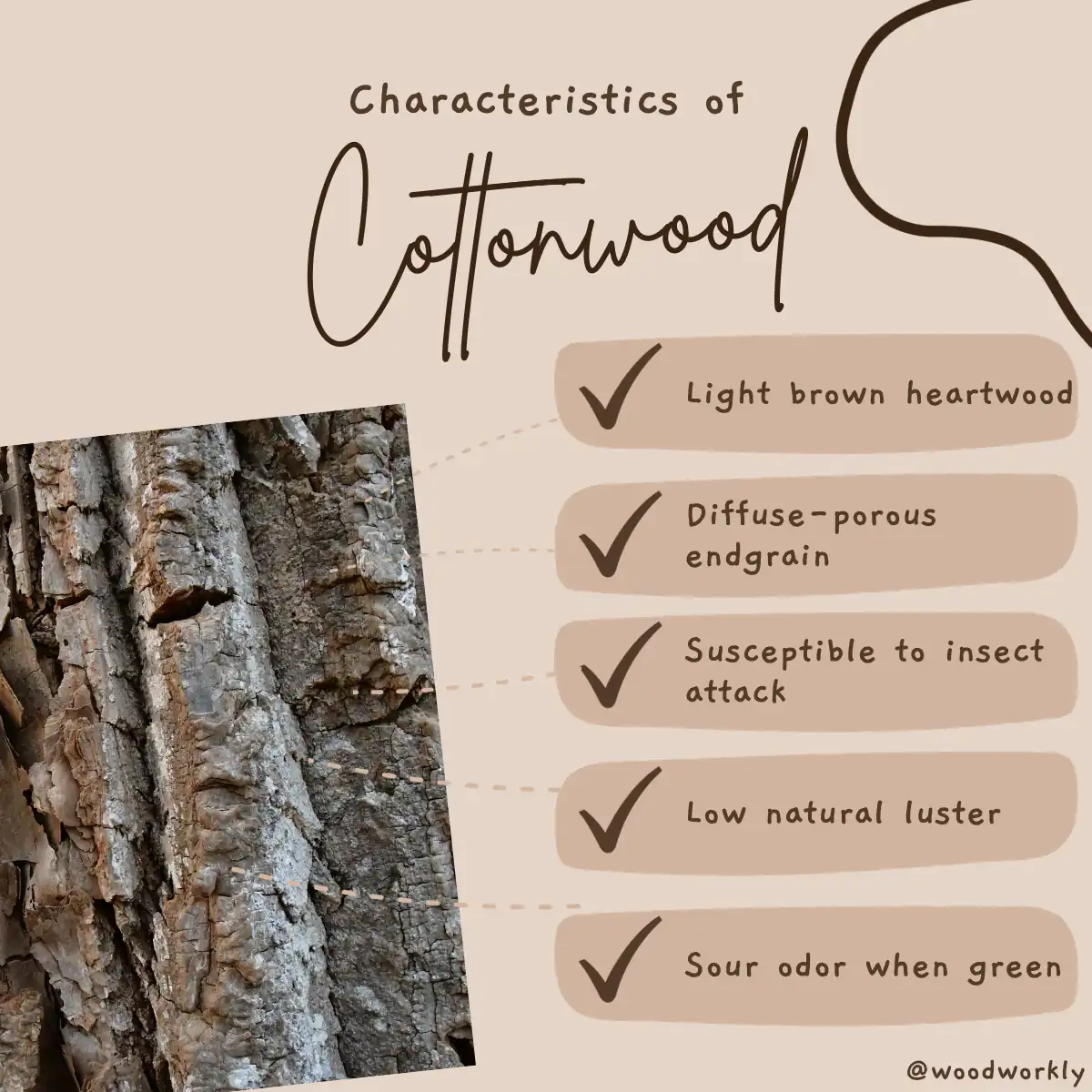
How Hard Is Cottonwood?
Cottonwood is considered a soft hardwood because of its low density and hardness.
Even though it comes from a hardwood tree family, the hardness of Cottonwood is significantly lower than most other hardwood species.
The hardness of Cottonwood is tested by a standard method called the Janka hardness test.
Janka hardness test is measured by considering the resistance of a particular wood type against wear and dent. If any wood has high wear and dent resistance, that means its Janka hardness rating is high.
So, according to the Janka hardness test values, Cottonwood has a hardness rating of 430 lbf (1,913 N) which is significantly less than most hardwoods and softwoods.
Because of being a soft hardwood species, Cottonwood has hybrid properties of both hardwoods and softwoods.
It can be used for many hardwood applications like construction and furniture making and softwood applications like carving and decorative purposes.
Even though Cottonwood is considered a soft hardwood, Cottonwood is harder angiosperm woods like Basswood and Aspen.
But at the same time, Cottonwood is softer than Poplar and Maple.
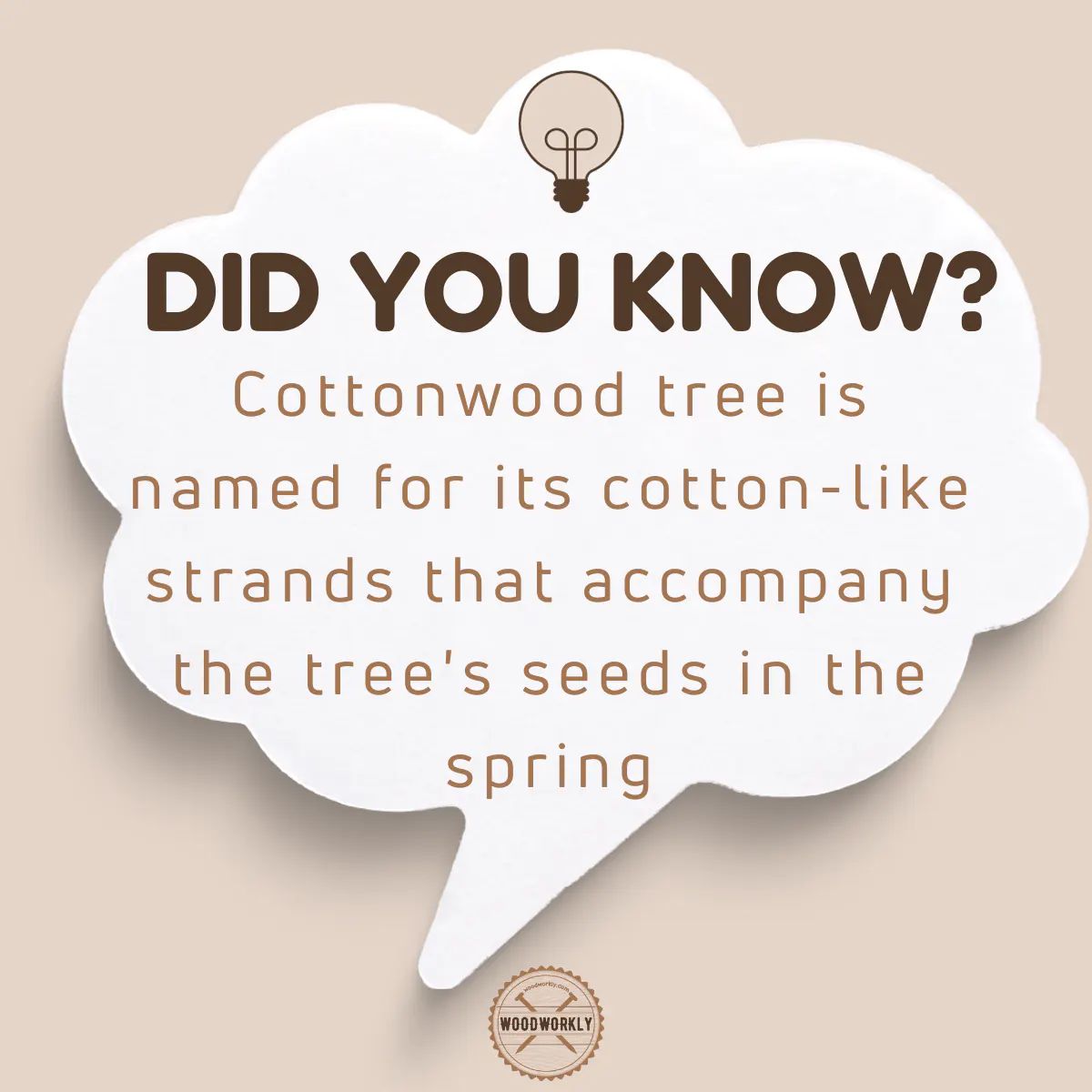
As a hardwood, cottonwood is moderately good for firewood because the wood is hard to split. But it has more nutrients than softwood ashes when burning.
Cottonwood has a straight or fairly irregular grain structure or with interlocked grain pattern.
Plus, it has diffused porous structures which are considered as less desirable wood species and are used to make products with less market value.
Most of the diffuse-porous woods are softwoods except soft hardwoods like Cottonwood. The vessels in the wood fibers of Cottonwoods are spread unevenly in an irregular pattern.
So, if you’re looking for hardwood with less market value and perform well in woodworking, Cottonwood is great in my opinion.
Usually, it has similar characteristic features to Aspen and Poplar.
Because of having a fuzzy surface, you need to have woodworking tools with sharp edges. But overall working with soft hardwood species like Cottonwood is so much easier.
Being a soft hardwood, Cottonwood is light in weight, soft, and difficult to bend even after softening wood using steam.
Bending and compression qualities are poor in Cottonwood with low shock resistance. Therefore, better not to use soft Cottonwoods for applications that require good flexibility.
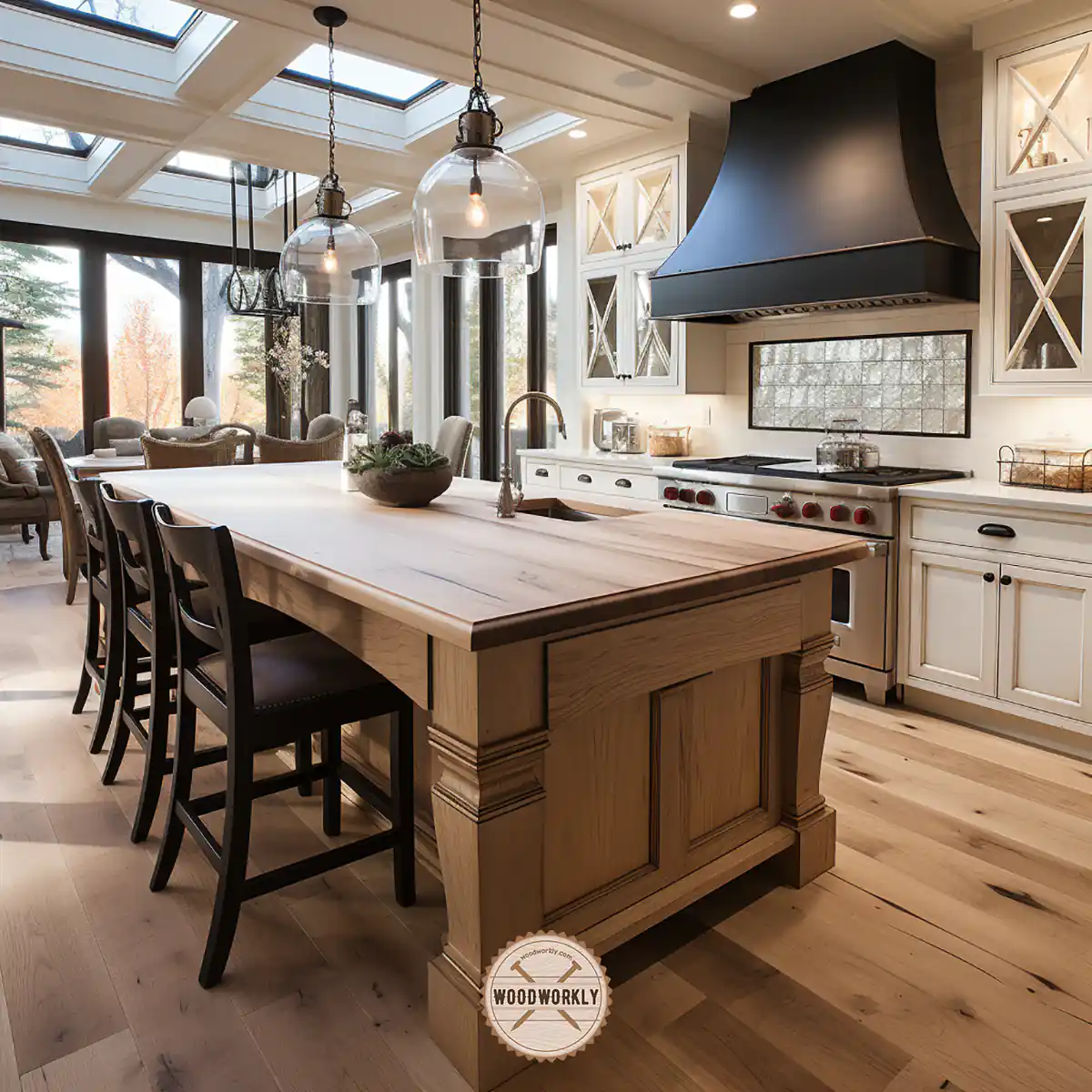
Hardness of Cottonwood Compared to Other Woods
As per the Janka hardness rating, Cottonwood has a hardness rating of 430 lbf (1,913 N) which is quite a low value.
So, in order to get a good understanding of how hardwood Cottonwood is compared to other popular wood types, refer to the table given below.
| Wood Species | Hardness value |
| Brazilian Walnut | 3,684 lbf (16,390 N) |
| Red Mahogany, Turpentine | 2,697 lbf (12,000 N) |
| Brazilian Cherry, Jatoba | 2,350 lbf (10,500 N) |
| Golden Teak | 2,330 lbf (10,400 N) |
| Hickory, Pecan, Satinwood | 1,820 lbf (8,100 N) |
| Hard Maple, Sugar Maple | 1,450 lbf (6,400 N) |
| White Oak | 1,360 lbf (6,000 N) |
| Ash (White) | 1,320 lbf (5,900 N) |
| American Beech | 1,300 lbf (5,800 N) |
| Red Oak (Northern) | 1,290 lbf (5,700 N) |
| Yellow Birch / Baltic birch | 1,260 lbf (5,600 N) |
| Teak | 1,155 lbf (5,140 N) |
| Black Walnut, North American Walnut | 1,010 lbf (4,500 N) |
| Cherry | 995 lbf (4,430 N) |
| Black Cherry, Imbuia | 950 lbf (4,200 N) |
| Red Maple | 950 lbf (4,200 N) |
| Douglas Fir | 710 lbf (3,158 N) |
| Silver Maple | 700 lbf (3,100 N) |
| Hemlock | 540 lbf (2,402 N) |
| Black Spruce | 520 lbf (2,313 N) |
| Cypress | 510 lbf (2,269 N) |
| Cottonwood | 430 lbf (1,913 N) |
| Redwood | 420 lbf (1,868 N) |
| Basswood | 410 lbf (1,823 N) |
| Engelmann Spruce | 390 lbf (1,735 N) |
| Sugar Pine | 380 lbf (1,690 N) |
| White Pine | 380 lbf (1,690 N) |
| Aspen | 350 lbf (1,557 N) |
| White Cedar | 320 lbf (1,423 N) |
As you can see, Cottonwood is significantly softer than many other kinds of wood, especially when compared to hardwoods like Oak, Ash.
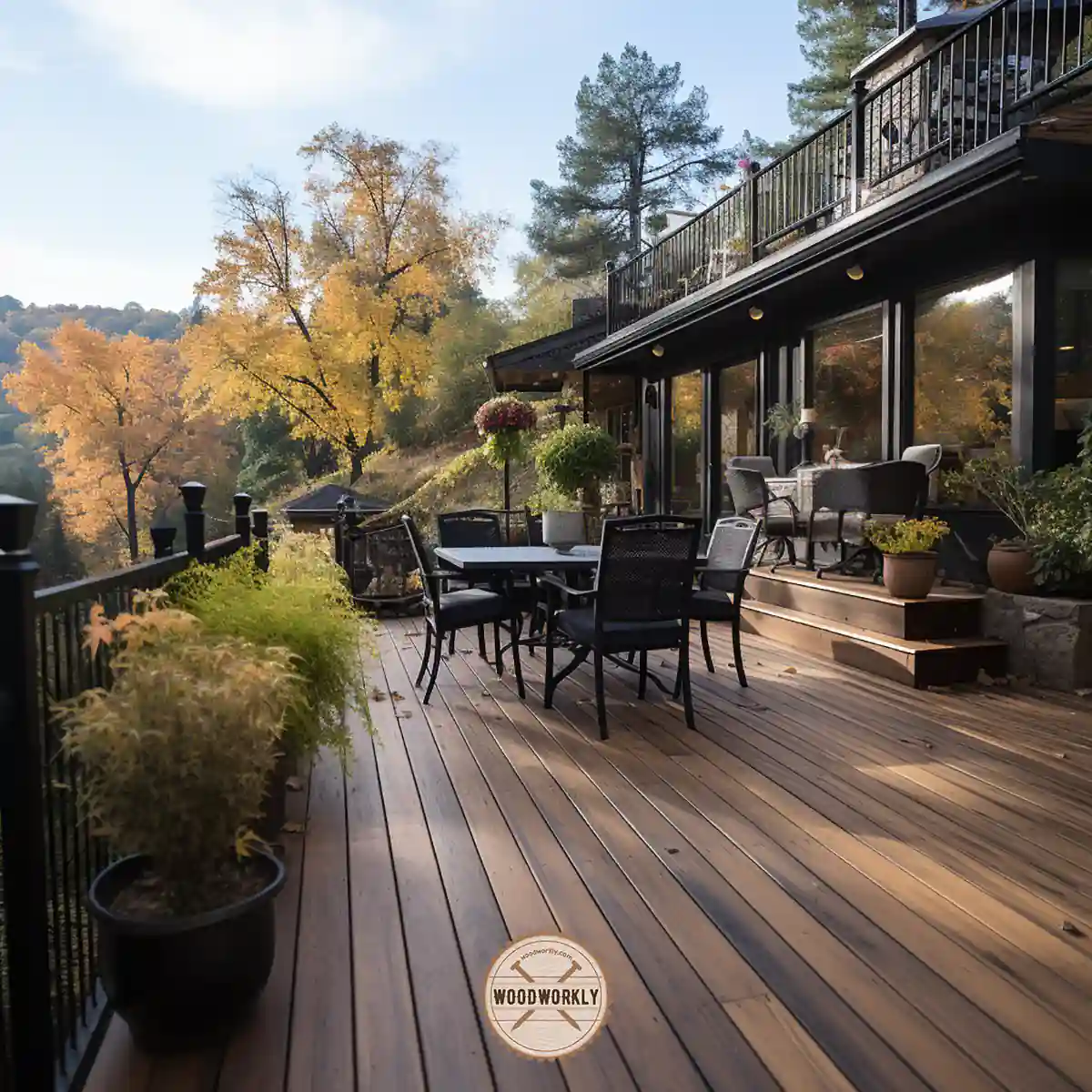
So, let’s find out the characteristics of Cottonwood to get a better understanding of its hardness.
Cottonwood Characteristics
Cottonwood is a hardwood is less density and hardness with lots of cool characteristic features that are useful in our day-to-day lives.
Light brown heartwood and pale-yellow sapwood add a unique, light, and creamy look to your indoor and outdoor furniture and other woodwork.
Cottonwood mostly has a straight grain with a natural luster. But because of having diffuse porous structure, Cottonwood is not good for high-range luxury furniture.
Because of having poor hardness and low density Cottonwood has poor durability and won’t last for long enough, especially without proper wood finishing.
You should always seal Cottonwood furniture with lacquer, varnish, paint, or oil-based finishers like Tung oil or Danish oil to keep the furniture protected from environmental elements such as moisture, UV light, and insect attacks.
Cottonwood has poor rot resistance, and it is prone to insect attacks. Once the wood starts to rot, restoration can only be done with a quality product like FlexSeal.
But overall, Cottonwood has high workability since it is easy to cut, drill, screw, and shape with both woodworking hand tools and power tools.
But due to the fuzzy surface Cottonwood has got, your woodworking tools need to be well sharpened.
Cottonwood is prone to warp and crack during drying. In order to keep the wood from warping and cracking when drying, a quality wood finisher or sealer needs to be applied all over the wooden surface.
Here’re the most significant qualities of Cottonwood,
- Soft hardwood
- Poor rot resistance
- Poor decay resistance
- Poor durability
- High workability
- Prone to insect attacks
- Sour odor
- Easy to finish
- Tendency to crack and warp easily

Properties of Cottonwood
Here’re the main characteristic features of Cottonwood,
| Color | Pale yellow color |
| Density | 0.42 kg/m3 |
| Hardness | 430 lbf |
| Wood Type | Hardwood |
| Applications | Veneer, plywood, furniture, boxes |
So, let’s have a brief look at the advantages and disadvantages of Cottonwood as a hardwood species.
Pros And Cons Of Cottonwood
| Pros | Cons |
| Easy to work with | Need high maintenance |
| Lightweight | Prone to insect attacks |
| Easy to finish | Poor rot and decay resistance |
| Cheap in price | Prone to cracks and warp |
| High availability | Poor durability |
| Food safe | |
| No odor after dried |
As you can see Cottonwood is not the best choice when it comes to its durability.
But with proper finishing and sealing, you can increase its durability and get maximum use of it for a long time.
So, let’s see some applications of Cottonwood,
What is Cottonwood Used For?
Cottonwood can be used for many small woodworking projects. Working with Cottonwood is so much easier even for a beginner in woodworking.
But your woodworking tools need to be well-sharpened to make smooth sharp edges.
Here’re some common applications of Cottonwood,
- Boxes and crates
- Veneer
- Plywood
- Furniture making
- Cupboards
- Doors and windows
- Panels
- Flooring
- Decking
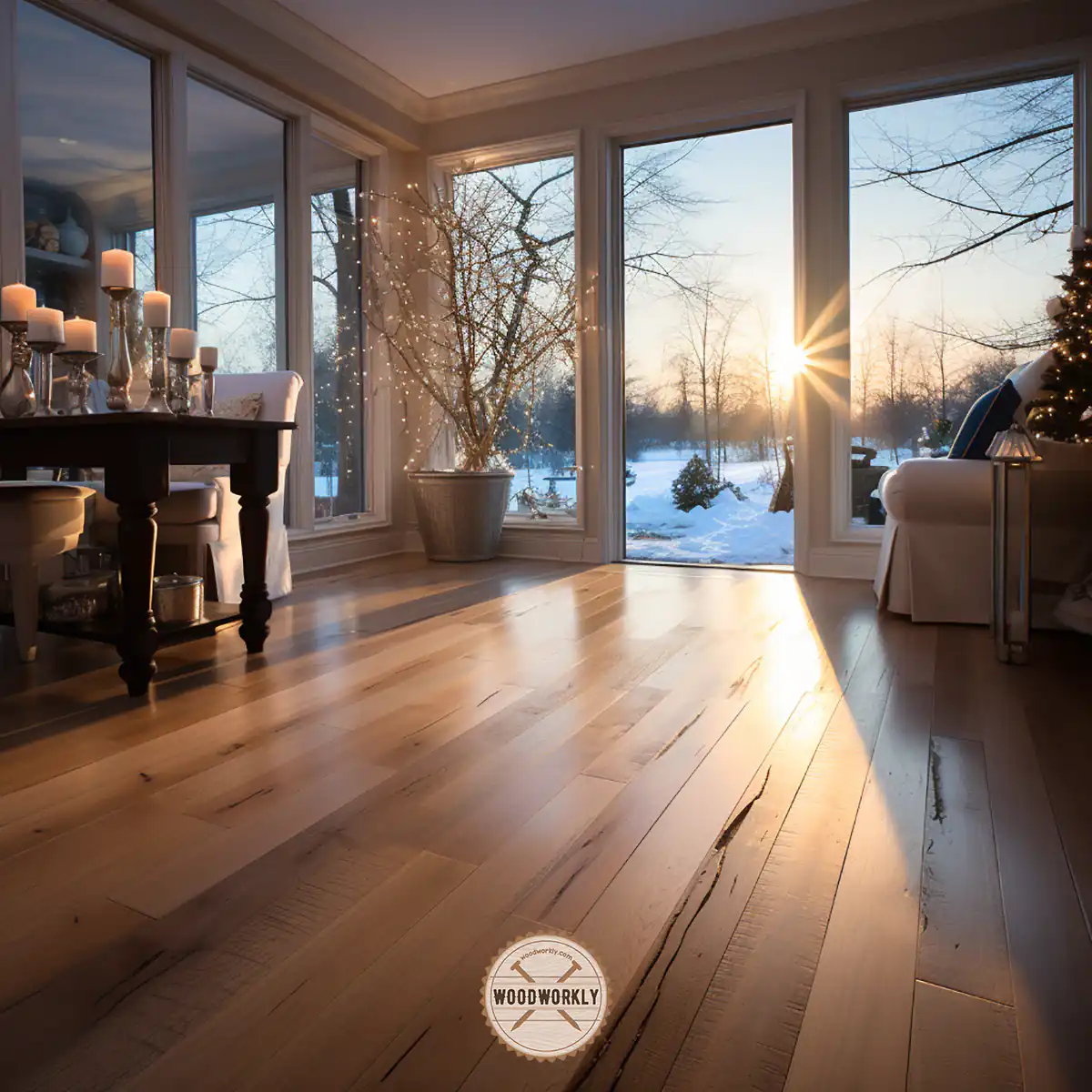
How Strong Is Cottonwood?
Cottonwood is one of the lightest woods with good strength for its weight. Therefore, Cottonwood has a good strength-to-weight ratio which is so important in the woodworking world.
But overall, Cottonwood is weaker than many other hardwoods. It is weaker in bending and compression. Cottonwood has poor shock absorbance as well.
The compressive strength and bending strength of Cottonwood are as follows,
- The compressive strength of Cottonwood is 33.854 Mpsi
- The bending strength of Cottonwood is 9,466 Mpsi
Therefore, better not to use Cottonwood for applications that carry a lot of weight and stress. It doesn’t have good flexibility bare the load.
Cottonwood has 12% of moisture content according to its weight.
Cottonwood can be used only for small woodworking items since it’s too weak for big construction-type projects.
That’s it, folks! Now you know, is Cottonwood a hardwood and why cannot we gain the best of it even if it is considered a hardwood.

Is Cottonwood Hard To Split
Cottonwood is hard to split because of being hardwood and some Cottonwoods have interlocked grain patterns.
Because of being difficult to split, Cottonwood is difficult to use for firewood. But with well-sharpened woodworking tools, you can easily split Cottonwood since it is not hard as most other hardwood species like Oak, Mahogany.
Is Cottonwood Harder Than Pine?
Cottonwood is harder than White Pine and Sugar Pine, but it is softer than Yellow Pine.
Pinewood is a softwood and Cottonwood is a hardwood with higher density and hardness than Pinewood.
Both Pine and Cottonwood are great in woodworking. Cottonwood is not hard as you think Pine is. Just a slight difference. Both are versatile wood types with a lot of uses.
According to the Janka hardness ratings, the hardness of Pine and Cottonwood is as follows,
| Wood Type | Hardness |
| Cottonwood | 430 lbf |
| White Pine | 380 lbf |
| Sugar Pine | 380 lbf |
| Yellow Pine | 870 lbf |
As you can see even though White Pine and Sugar Pine are the same hard as Cottonwood, Yellow Pine is twice as much harder as Cottonwood.
Is Cottonwood Harder Than Redwood?
Even though Cottonwood is a hardwood and Redwood is a softwood, both have the same hardness values.
But when working with both kinds of wood, you can notice Cottonwood is harder than Redwood in some cases.
Both Cottonwood and Redwood are great for small woodworking projects with excellent strength-to-weight ratios.
According to the Janka hardness ratings, the hardness of Redwood and Cottonwood is as follows,
| Wood Type | Hardness |
| Cottonwood | 430 lbf |
| Redwood | 420 lbf |
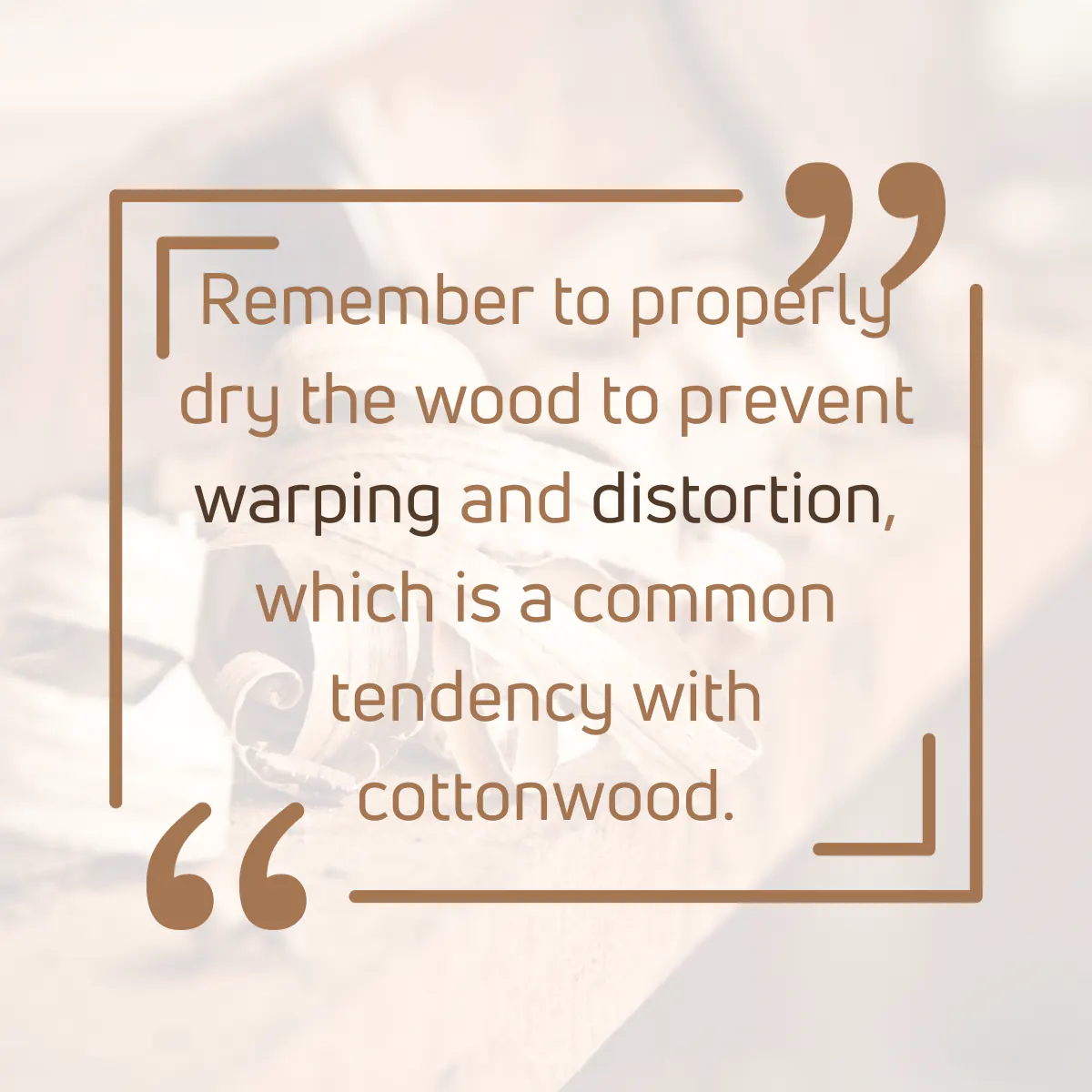
So, let’s answer some frequently asked questions.
FAQs
What are the common uses of Cottonwood?
Cottonwood is widely used for making boxes, crates, as veneer and plywood, and serves various utility purposes. Its easy workability makes it a preferred choice for hobbyist projects as well.
What kind of texture does Cottonwood wood have?
Cottonwood wood generally has a uniform medium texture with a low natural luster, offering a visually pleasing and tactile experience.
How does Cottonwood wood respond to different woodworking techniques?
Working with Cottonwood is relatively easy with both hand and machine tools, although it can warp and distort during drying, and requires sharp cutters for planing to avoid fuzzy surfaces.
What are the pricing and availability details of Cottonwood?
Cottonwood is generally considered a low-value wood and isn’t commonly harvested for lumber, but it can be found throughout its natural range for utility purposes at a low price, making it a budget-friendly option.
Does Cottonwood have any distinctive odor?
Yes, when green, Cottonwood has a sour odor, which disappears as the wood dries, making the working process more pleasant with time.
Is Cottonwood resistant to rot and insects?
Cottonwood is rated as non-durable and is susceptible to insect attack, making it a less ideal choice for outdoor constructions without proper treatment.
Are there any health risks associated with working with Cottonwood?
Apart from the standard health risks associated with any wood dust, there have been no further health reactions associated with Eastern Cottonwood, making it relatively safe to work with.
Why is the Eastern Cottonwood tree special in the context of American history?
The Eastern Cottonwood is historically significant as it offered shade and firewood to pioneers on the Oregon Trail, symbolizing hope and the presence of nearby water sources, hence being known as the “pioneer of the prairie”.
Did I cover all you wanted to know about: Is Cottonwood A hardwood?
In this article, I have deeply discussed, whether is Cottonwood a hardwood, how hard Cottonwood is with its characteristic features, and its pros and cons as well.
Cottonwood is classified as a hardwood since it comes from a deciduous tree. However, its wood is somewhat soft compared to other hardwoods, making it easier to work with for various utility purposes and woodworking projects.
Furthermore, I’ve answered some frequently asked questions as well.
Hope you have gained good knowledge about the hot topic, is Cottonwood a hardwood?
Try Cottonwood for your next woodworking project and see how easy to work with it. Happy woodworking!